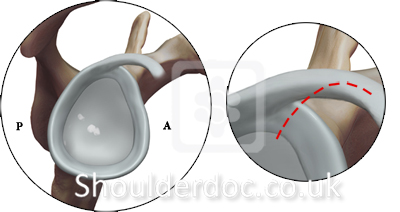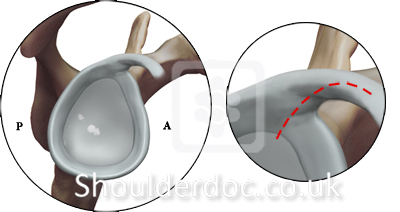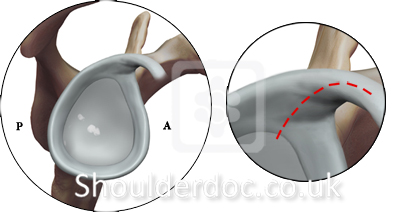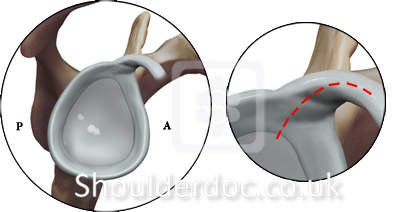Biceps anchor / SLAP classifications
1. SLAP lesions: Snyder classification
2. SLAP lesions: Maffet classification
3. Morgan classification
4. Variations of Biceps anchor: Vangsness
SLAP LESIONS: Snyder classification (1990), (Superior Labrum Anterior and Posterior)
In: Shoulder Arthroscopy, Edited by Snyder S J, 115-132, 1994
Type 1
- fraying without frank tear or detachment, 21%
- frequent incidental finding in middle aged or elderly patients
- traumatic detachment of biceps anchor without midsubstance tear, 55%. Middle gelnohumeral ligament may be included in the lesion
- bucket handle tear fragment, 9%
- as type 3 but the tear extends in to the biceps tendon,10%; Portion of the tendon is attached to the displaced fragment
 Top
TopMaffet’s (1995) Subclassification of SLAP lesions.
Maffet et al, Am J Sports Med, 23:93-98, 1995
Types 1 – 4 : equivalent to the Snyder classification
Type 5 : Anteroinferior bankart lesion which continues superiorly to include separation of the biceps tendon
Type 6 : Unstable flap tear of the labrum with biceps tendon separation
Type 7 : SLAP lesion that extends antero-inferiorly along the labrum to below the MGHL
SLAP Lesions : Morgan’s Classification
(Sub-classification of type 2 SLAP, Snyder)
Morgan CD et al, Arthroscopy, 14:553-565, 1998
- Anterior SLAP
- Posterior SLAP
- Combined SLAP
 Top
TopVariations of Biceps anchor: Vangsness
Vangsness et al, JBJS (b) 76: 951-954, 1994
Type 1: Biceps anchored all to posterior labrum

Type 2: Biceps anchored mainly to posterior labrum, small part to anterior labrum

Type 3: Biceps anchored equally to anterior and posterior labrum

Type 4: Biceps anchored mainly to anterior labrum, small part to posterior labrum

 Top
Top


